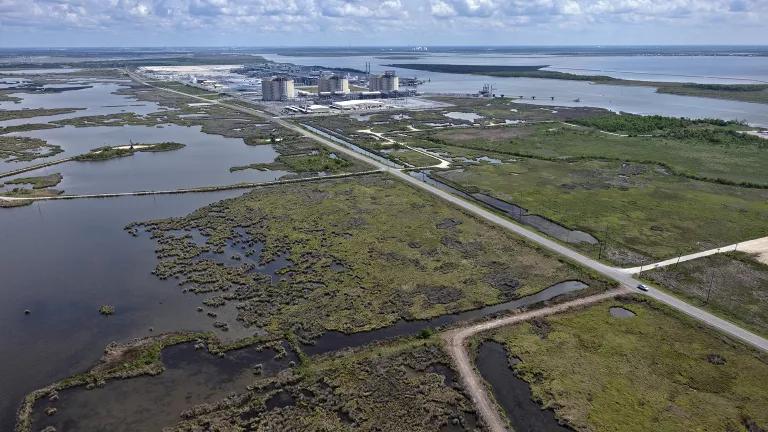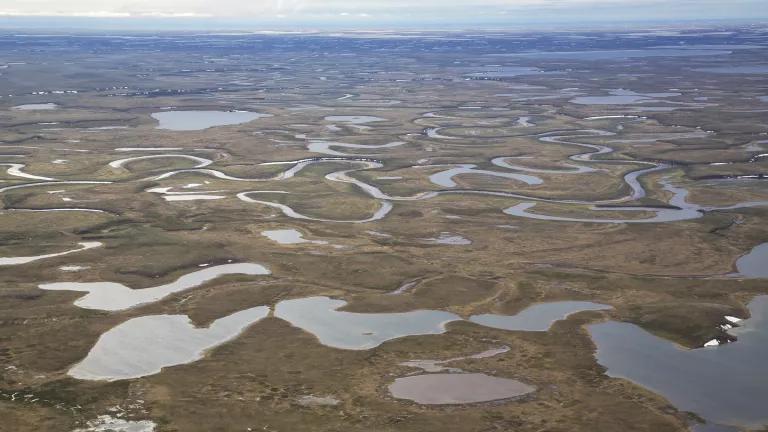The science is out…again! Today the Environmental Protection Agency (“EPA”) re-released its Bristol Bay Watershed Assessment, which still finds that large-scale mining -- like the proposed Pebble Mine -- at the headwaters of Bristol Bay could potentially devastate the world's greatest wild salmon fishery.
NRDC joins Bristol Bay residents, Bristol Bay tribes, the Bristol Bay Native Corporation, commercial fishermen, sportsmen, business owners, chefs, jewelers, investors, churches, and environmental and conservation groups in thanking EPA for conducting a sound scientific review of the impacts of large-scale mining.
We ask the agency to use this science-based information to protect the Bristol Bay watershed, its world-class salmon fishery, and the people, communities, commerce, and wildlife that depend on its salmon.
The Watershed Assessment is the product of more than two years of data review, scientific analysis, hearings in the region, peer review, and revision. EPA originally issued the Watershed Assessment in May 2012. The agency has since revised that study to address comments received from both the public and a panel of 12 independent scientists convened to review the agency’s science last year.
According to the Watershed Assessment, Bristol Bay’s wild salmon fishery provides 11,000 jobs and is valued at $300 million annually (various recreation activities generate an additional 3,000 jobs and $180 million annually). Salmon also sustain the traditions and culture of Alaska Natives, who have relied on subsistence fishing for thousands of years.
But the proposed Pebble Mine would risk this economic and cultural powerhouse. The Watershed Assessment concludes that mining at the headwaters of Bristol Bay would:
- Destroy spawning and rearing habitat, including up to 90 miles of streams,
- Devastate 4,800 acres of wetlands,
- Significantly impact fish populations in streams surrounding the mine site.
In 2010, the Obama Administration recognized the unique importance of the region, barring offshore oil and gas exploration in Bristol Bay. Interior Secretary Ken Salazar described Bristol Bay as “a national treasure that we must protect” and “too special” to drill.
In today’s announcement, EPA reiterated the importance of Bristol Bay and noted these key findings:
- All five species of North American Pacific salmon are found in Bristol Bay. The Bristol Bay watershed supports the largest sockeye salmon fishery in the world. The Kvichak River produces more sockeye salmon than any other river in the world. The Nushagak River is one of the largest producers of Chinook salmon in North America.
- The average annual run of sockeye salmon is about 37.5 million fish.
- Bristol Bay provides habitat for numerous animal species, including 29 fish species, more than 190 bird species, and 40 animal species.
The Watershed Assessment – and EPA’s involvement – is critically important. If left to its own devices, the State of Alaska has never said “no” to a large mine, which is why nine federally recognized tribes in Bristol Bay, the Bristol Bay Native Corporation, commercial fishermen, sportsmen, business owners, chefs, jewelers, investors, churches, and environmental and conservation groups have petitioned the agency to use its authority under Section 404(c) of the Clean Water Act to protect Bristol Bay.
Show your support and stop the Pebble Mine.



